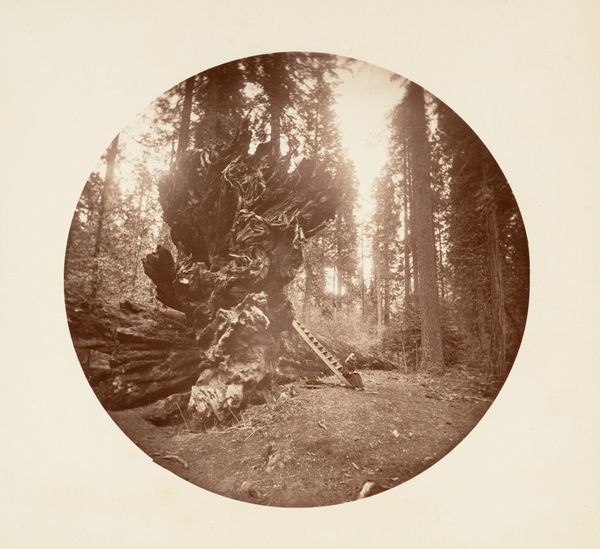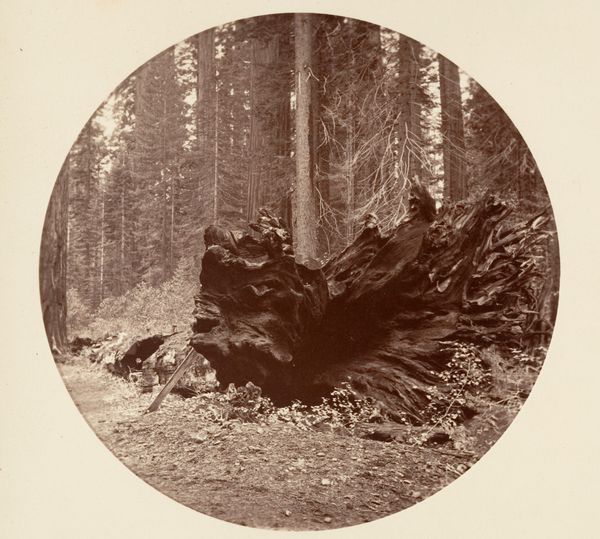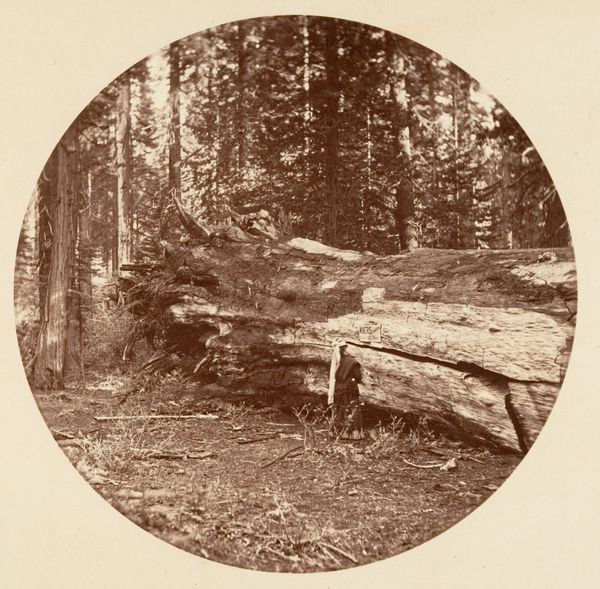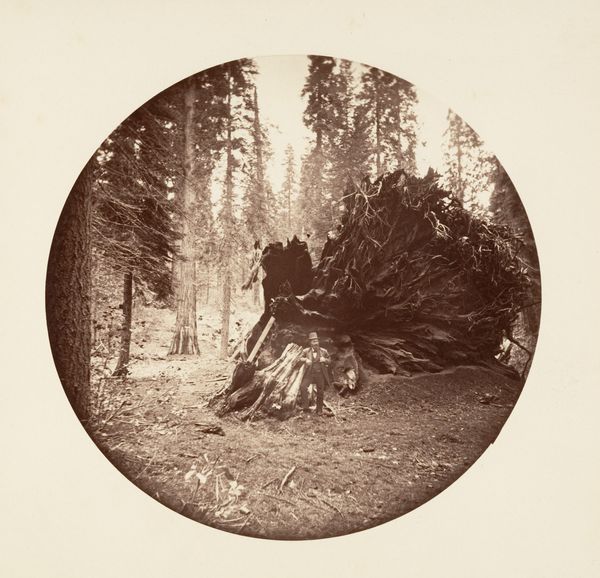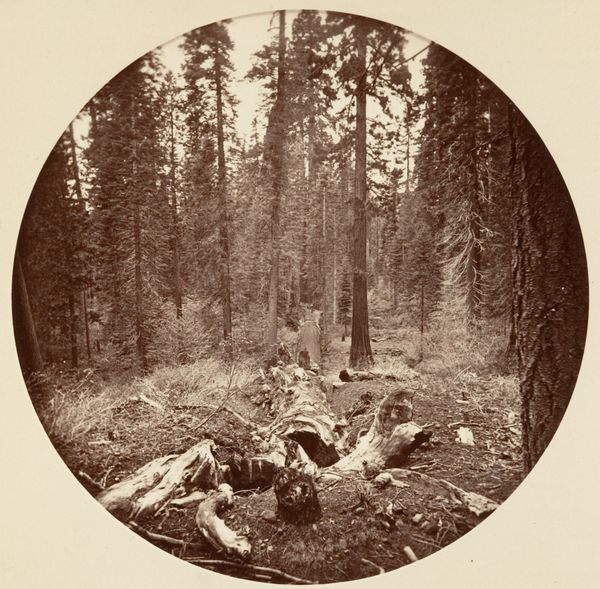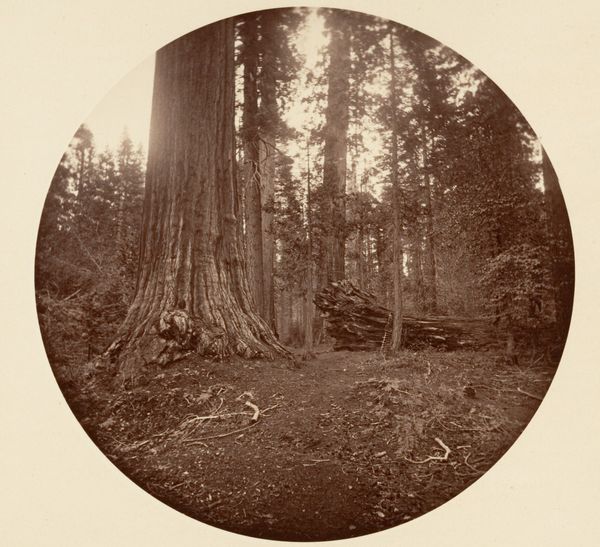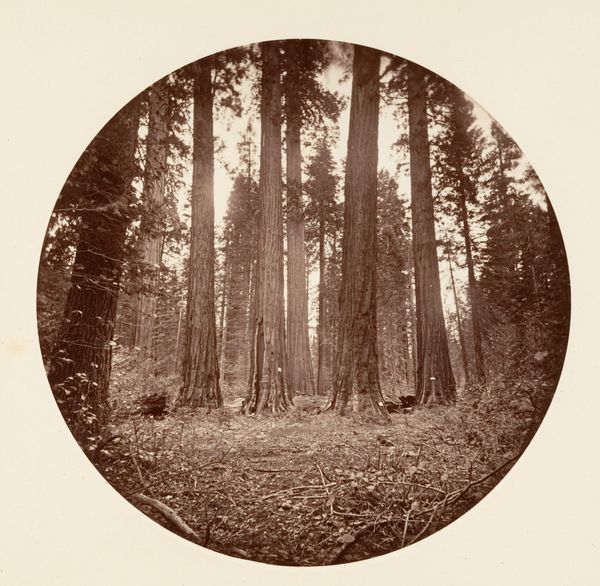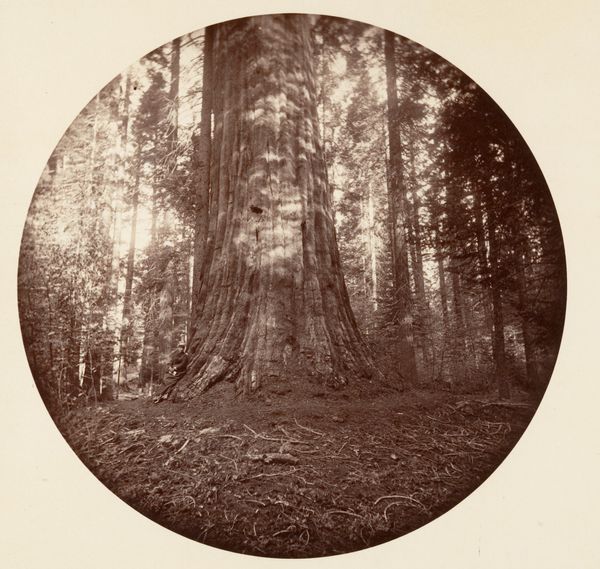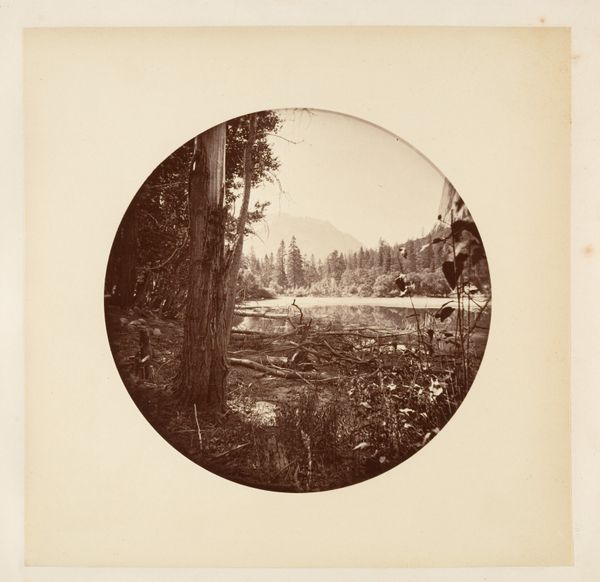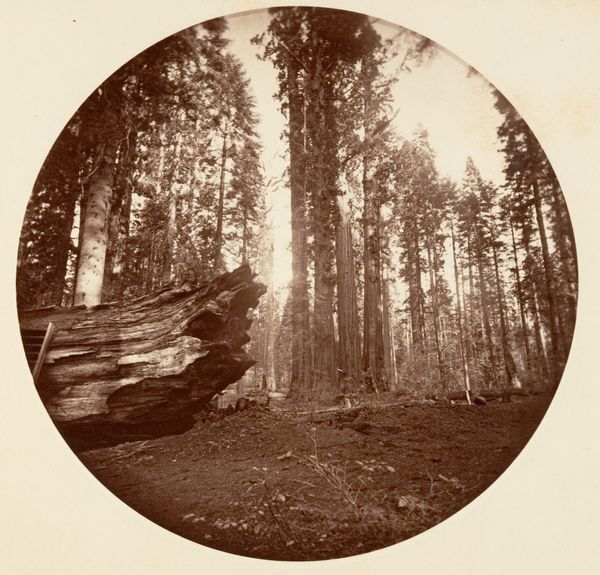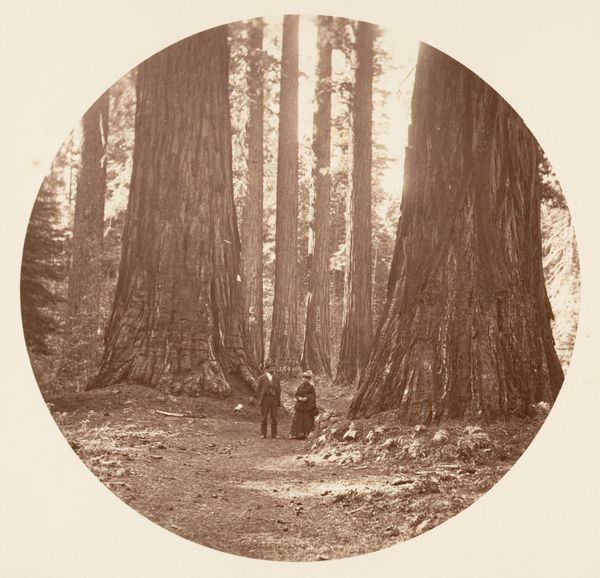
Dimensions: Image: 12.5 x 12.5 cm (4 15/16 x 4 15/16 in.), circular Album page: 24 x 25.1 cm (9 7/16 x 9 7/8 in.)
Copyright: Public Domain
Curator: Carleton Watkins created "Auld Reckie-C. Grove" between 1876 and 1880. This gelatin silver print, currently at the Metropolitan Museum, shows a fallen sequoia. My first impression? Monumental decay, almost a still life of transience. Editor: I see an incredible study of textures first. The rough bark, the smooth cuts, the delicate new growth all rendered in this sepia tone... You can almost smell the damp earth and the resin. Curator: "Auld Reckie," means "Old Smoky" - an Edinburgh nickname playing on its ever-present smoke - as well as alluding to the famous sequoia known as the "Old Chief" – is fascinating, isn’t it? The tree evokes both the sublime majesty of nature and also the inevitable passage of time. There’s an anthropomorphic quality in its fallen state too. Editor: Watkins' choice of a circular frame almost industrializes the image, like a porthole viewing some strange specimen. The technology involved—the gelatin silver process allowing for finer details—contrasts beautifully with the rawness of the subject. Did he manipulate the chemical process to highlight certain elements of the scene? Curator: It definitely speaks to Watkins' technical skill. The composition also feels deliberately arranged. See how he framed the young saplings beside the massive tree. Nature regenerates, right? What meanings do we humans project onto this constant cycle? Editor: True, the image's power comes partly from that contrast between decay and regrowth. Focusing on the photographic method allows me to really question what is 'natural' and what is mediated through industrial techniques and framing practices. The labor that went into lugging all that equipment...it's central to the viewing experience. Curator: Watkins' photographic style is called pictorialism which is why it looks like a painting. It’s more than just documentation; it's his emotional reaction to what he is seeing and a larger reflection on how we deal with change, loss, and how time shapes what we perceive as meaningful. Editor: Seeing this now, after knowing the laborious means to capturing it, helps me remember how much artistry goes into constructing even seemingly ‘objective’ representations of nature. Curator: For me, that circular frame containing a fallen giant whispers to the temporary nature of everything we hold powerful, a powerful reminder that even giants are not immortal. Editor: Indeed. It underscores how photographic practice and technology actively engage in creating meaning around landscapes— and that process isn’t ever truly ‘neutral.'
Comments
No comments
Be the first to comment and join the conversation on the ultimate creative platform.
